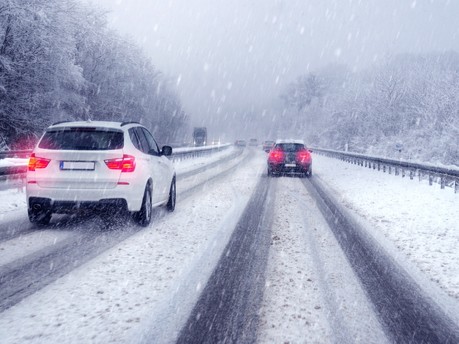Tips for Driving in Snow
Don't get caught out in Winter weather - read our top tips!
Snowy road conditions can make driving a real challenge and can lead to accidents. With this in mind, and as we head into the colder part of the year, it is important to prepare yourself, your vehicle and your driving style so that you’re ready for any eventuality - even snow!
What to do before you drive in snow
Preparing for driving in the snow is everything, and failure to do so could lead to problems in tricky conditions. It’s important to take the steps below in order to avoid these as much as possible:
- Plan your journey – check the route you’re going to take for any traffic updates.
- Allow more time – it's normal for your journey to take longer, make people aware when you leave so that they know that you’re driving.
- Make sure that your vehicle is completely clear of snow. Remember to clear your roof! Driving with snow on your roof could actually land you in trouble with the police!
- Wipers, Tyres and Screenwash! Make sure that your wipers work, you don’t need or want a smeary windscreen when visibility is already a problem. Check the tread on your tyres, inadequate tread will not grip on the snow/ice! Finally, make sure that you have enough screenwash. Did you know that most screenwashes protect down to -5 to prevent water from freezing? You can clean your windscreen without worrying it will freeze over whilst driving.
- Remember to pack for the worst! Be prepared by ensuring that you have the following: a demisting pad, torch, a hi-vis vest to make you visible if you break down, a blanket to keep you warm, some food, a drink, screenwash, de-icer, ice scraper, phone charger, a first aid kit, a warning triangle and some jump leads if possible.
How to drive in the snow
Driving in these cold, slippery conditions takes great care and attention, so adapting your driving style when the weather turns will help keep you and your car safe:
- Keep your speed down and allow more time to stop and steer when approaching corners.
- Wear dry and comfortable footwear.
- Accelerate gently, use low revs and change up to a higher gear as soon as possible
- Try to pull off in second gear as this will help reduce the wheels slipping.
- Get your speed right and maintain safe stopping distances between you and the car in front, leaving as much as 10 times the normal recommended gap!
- When approaching a bend or corner, brake before you actually start to turn the steering wheel. If your car does lose grip try not to panic; the key thing is to take your foot off the accelerator and try to point the vehicle in the right direction, but with no sharp actions.
- If you do encounter a skid, steer gently into it – as an example, if the rear of the car is sliding to the right, steer to the right. Do not take your hands off the steering wheel or stamp your foot on the brakes – this will make it slide more.
- When driving in heavy snow, make sure that you use your dipped headlights. Daytime running lights are not enough, they don't always put lights on the rear of your car.
- If the road has not been gritted, be wary of driving in the tracks left behind by previous road users as compressed snow is more likely to be icy than fresh snow!
Prepare your car with EMG service centres in East Anglia
At our various service centres across the East Midlands, we’re able to help motorists prepare for the winter conditions. As a supplier of manufacturer parts and accessories, there are also many ways we can help adapt your vehicle for the colder month - contact us today to find out more.

